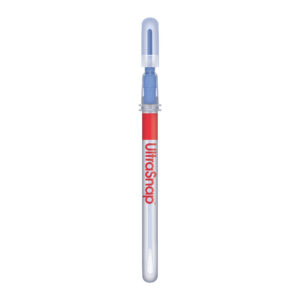ATP tests are used to verify cleaning methods in a diverse range of industries. Since the emergence of the COVID-19 Pandemic in the UK in 2020, it is now more important than ever to ensure that facilities have a clean and sanitary environment, particularly in the food and beverage industry. By undertaking surface testing for Adenosine Triphosphate, facilities can measure the effectiveness of their cleaning practices.
What is ATP?
ATP (adenosine triphosphate) itself is an energy molecule found in all living cells, that allows cellular metabolism to take place. All forms of organic matter contain ATP, and in Healthcare settings there are many forms of organic matter such as bodily fluids, blood and bacteria left on surfaces. This organic matter can become a point of cross-contamination between patients and staff, potentially leading to Hospital Acquired Infections (HAI’s) if not properly cleaned. Thus, the inclusion of ATP Hygiene testing after a surface has been cleaned is an essential indication of cleaning efficacy.
What is an ATP test?
An ATP test is used to measure levels of ATP on a surface, and thus the cleanliness levels of a facility. The ATP test provides accurate results that define, monitor & maintain cleaning standards within a facility. The presence of ATP on a surface indicates improper cleaning and the presence of contamination, including food residue, allergens and/or bacteria. This implies a potential for the surface to harbour and support bacterial growth.
-
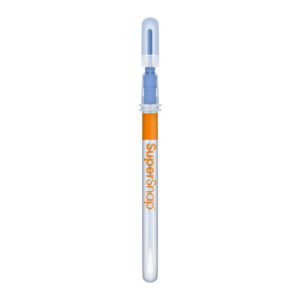
Hygiena SuperSnap™ (100 Box)
The most sensitive ATP surface test in Hygiena’s portfolio
£185.00 Add to basket -
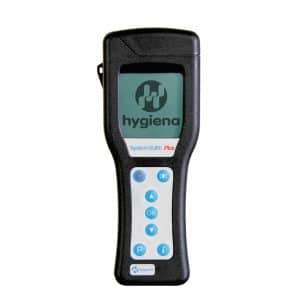
Hygiena SystemSURE Plus
World’s best selling ATP sanitation monitoring system
£1,288.91 Add to basket -
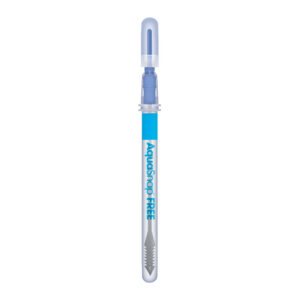
Hygiena AquaSnap™ Free (100 Box)
AquaSnap™ Free measures non-microbial ATP in a solution
£175.00 Add to basket
Why do we need to verify cleaning practices?
There is a universal need across all industries to measure the effectiveness of cleaning practices, to ensure businesses operate correctly and safely.
Although a surface may look clean, it does not always mean that it is, and some contamination cannot be seen with the naked eye. In addition, contaminated surfaces and equipment can lead to rapid microbial contamination. Therefore, if food is going to be in contact with the surface, it is essential to rid the risk of contamination from that surface.
It is widely known that where there is ATP, there is a higher chance of the presence of Microorganisms. Thus, the higher the ATP level, the higher the probability that Bacteria and Germs are present. Therefore, the surface would need to be recleaned before swabbing again- resulting in lower ATP levels.
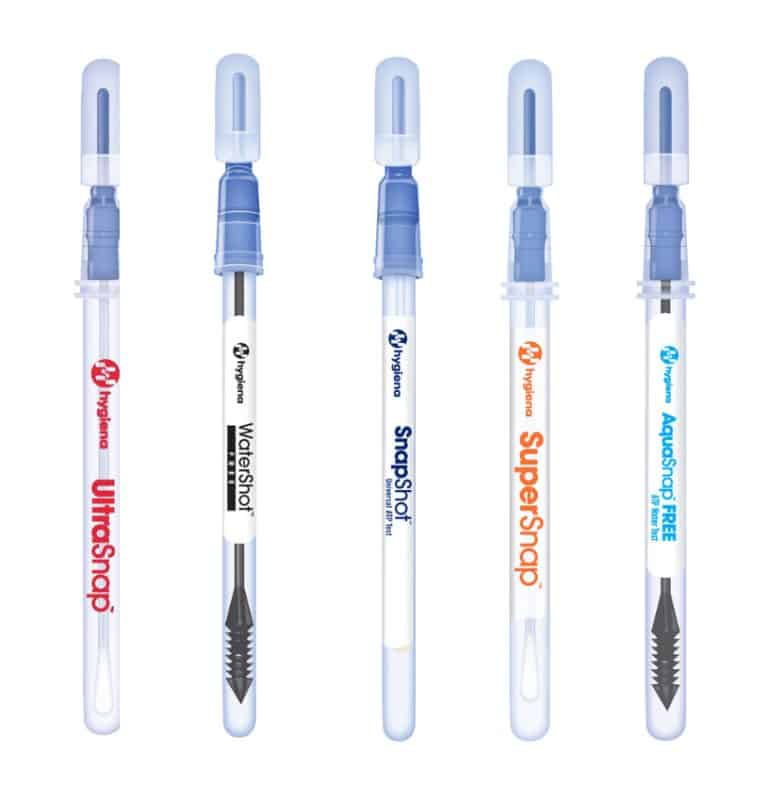
What are the benefits of using an ATP test as a cleaning verification method?
Using ATP Hygiene Monitoring is an efficient way to verify cleaning processes, as it eliminates all kinds of human error, and can identify any contaminated surfaces beyond a visual inspection. It is a simple and effective way of verifying the cleaning processes, without being time-consuming. The results are received rapidly, with the Hygiena SystemSURE Plus providing results in as little as 15 seconds, with easy, quantitative data that verifies the cleaning process is being carried out correctly.
How does the ATP process work?
There are three essential parts to an ATP Surface test that are used to determine overall performance: the luminometer, the bioluminescence chemistry and the test device design. The Hygiena ATP Monitoring System combines an industry-leading photodiode with superior liquid-stable chemistry and the patented Snap valve test device, to produce the most accurate ATP Monitoring system on the market.
An ATP Hygiene Monitoring system is a device that is used to check the cleanliness of an environment. An ATP system provides a numerical value reading that is used to spot check the cleaning standards deployed by a site’s cleaning or infection control team. The system uses a hand-held device (the luminometer) combined with a sampling swab (A Hygiena sampling swab that can be found on our Sychem Shop) to identify the cleanliness of any given surface or water sample, by identifying the level of ATP that is present.
When to swab for ATP
The best time to carry out an ATP test is after the initial clean, but before sanitising the surface. This is because sanitiser does not work on a dirty surface, and if the result proves to be a failure, it will be a waste of sanitiser. Users must not swab a visibly dirty surface; collecting samples from visibly contaminated surfaces could inhibit the reaction from the ATP test.
Our ATP Testing portfolio
At Sychem, we offer a number of ATP testing devices and ATP Hygiene Monitoring devices by our partner Hygiena. Our product range includes:
Hygiena SuperSnap™ (100 Box)– The most sensitive ATP surface test in Hygiena’s portfolio.
Hygiena SystemSURE Plus– The world’s bestselling ATP sanitation monitoring system
Hygiena AquaSnap™ Free (100 Box)– Measures non-microbial ATP in a solution
Hygiena UltraSnap™ (100 Box)– A user-friendly, all-in-one ATP sampling test
Hygiena EnSURE™ Touch– A next-generation touch screen quality monitoring system
Hygiena AquaSnap™ Total (100 Box)- Measures both free ATP and microbial ATP in solutions
Find out more about our full range of ATP products, or visit the Hygiena website for more information.
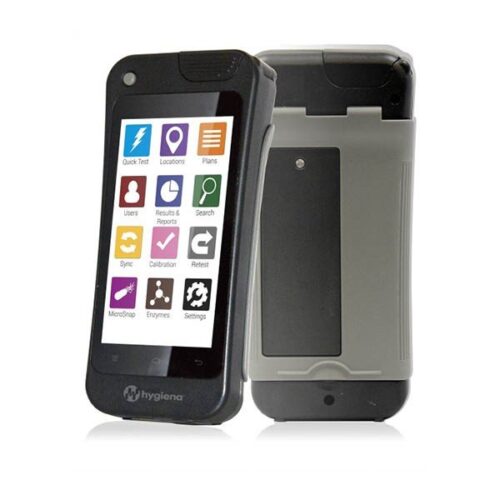
Hygiena EnSURE™ Touch
Next-generation touch screen quality monitoring system
£1,532.00
The EnSURE Touch is an advanced monitoring system that collects, analyses and reports data from various trusted quality test devices. Results in 10 seconds. Providing rapid and accurate sanitation verification data. The system features an intuitive smartphone design for a user-friendly system, and Enzyme test devices for multiple food safety and quality tests. This system is mostly used in the food & beverage and hospitality industries.
Shop Now








